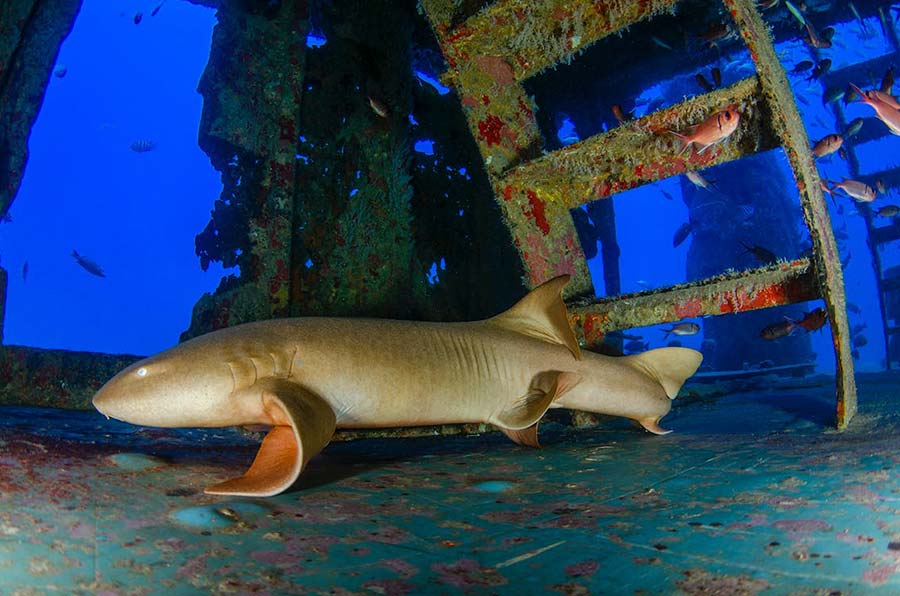Nurse Shark Behavior Fun Facts
8. Nurse Shark Reproduction
The way cat sharks mate is one of the most researched of all shark species.
Males approach resting females and bite them on their fins, flip them over, and insert their sexual organs.
After mating, it takes the female around six months to give birth to 20 to 30 baby sharks that measure around 27 to 30 cm/ 11 to 12 in in length.
Nurse sharks have ovoviviparous reproduction, in which the young develop inside the mother’s uterus and are nourished by the yolk of their eggs. After that, the female gives birth to them.
The nurse shark takes around five to six months to gestate its young. Female gives birth from 21 to 50 little ones, with an average of 34.
Nurse shark only reproduces every other year.
9. Nurse Shark Lifespan
The nurse sharks’ lifespan is not known for certain, but it is thought that they can live up to 25 years in captivity. According to the Shark Foundation nurse sharks in the wild are believed to live even longer, potentially up to 30 years or more.
10. Nurse Shark Diet
The nurse shark feeds mainly on invertebrates (squid, shrimp, crabs, cuttlefish, sea urchins) and small fish (catfish, mullet, and rays).
Some studies have found that cat sharks are very fond of juvenile spiny lobsters.
11. Are Nurse Sharks Social?
The truth is that nurse sharks tend to group, but the appropriate conditions must be met for this to happen. For example, in the Gulf of Mexico, where Dressel Divers operates, it is common to find them in groups because they have a large amount of food available. Piles of nurse sharks of up to 40 individuals have been found resting on top of each other. Scientists dismiss that these communities are formed for protection and bet that these groups occur to facilitate mating.
12. Nurse Shark Predators
There are no known species that have a marked preference for nurse sharks, except humans, of course. However, remains of nurse sharks have been found in the stomachs of lemon and tiger sharks. There are also documented instances of attacks by hammerheads and bull sharks, but they were unable to pierce the skin of the nurse sharks.



















